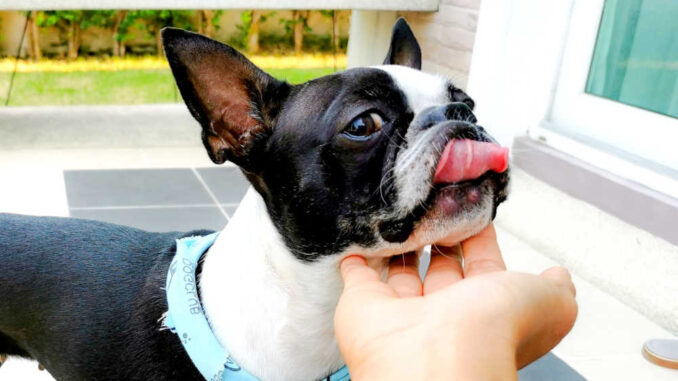
This article was updated on February 9th, 2024
It’s always concerning to see bumps developing on your dog’s chin: they’re unsightly and often cause your dog irritation and discomfort. Thankfully many of these chin lumps and bumps are treatable, some of which can even resolve with home-remedies. The first step is to understand the potential causes to identify the right treatment.
5 common causes of chin lumps and bumps in dogs
1. Acne
Acne in dogs, or canine acne, is a common skin issue that typically appears as small bumps on the chin and lips of dogs, as seen in the 3 pictures below (signs of acne on pugs):
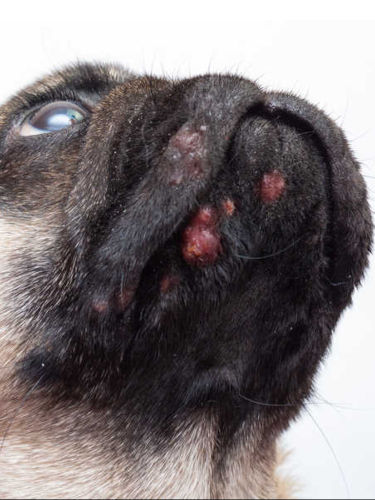
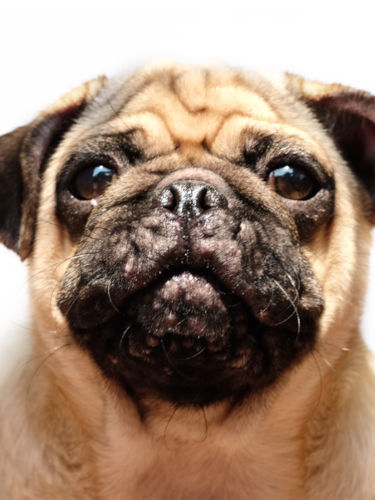
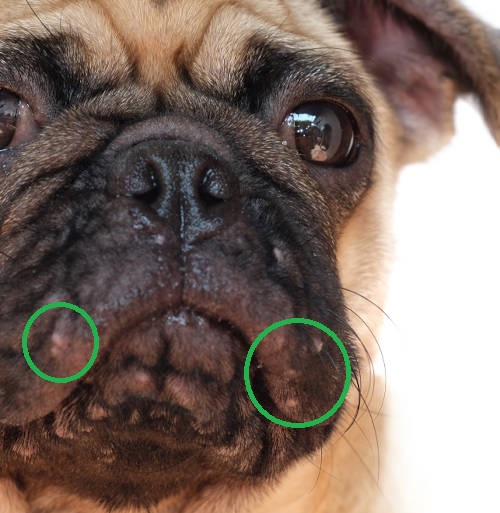
You can suspect your dog has acne on their chin if you notice blackheads, red bumps, swelling, and possibly pus-filled lesions around the chin and lip area.
A mild case of acne may resolve on its own with time and gentle cleaning. You can clean the affected area with mild antibacterial soap and cool water. You may also use cleansers like PetMD Topical Wipes if given the go-ahead by your vet. These contain chlorohexidine that will help dry and disinfect the skin, but it can be irritating for certain dogs.
However, more severe inflammation, facial swelling, bleeding, discomfort, or pus are all signs that something more severe may be going on underneath your dog’s skin. Vet prescribed oral antibiotics or antifungals are sometimes indicated in more complicated cases.
2. Folliculitis
Folliculitis, also known as superficial pyoderma, is a very common skin condition in dogs. In a typical week, my veterinary practice will see anywhere between five and 15 cases. This condition can occur anywhere on the dog’s body, but it is often seen on the face and chin.
Folliculitis manifests as inflamed hair follicles, which can look like small, red bumps or pimples. Symptoms can also include hair loss, scabbing, and itchiness and the formation of pustules.
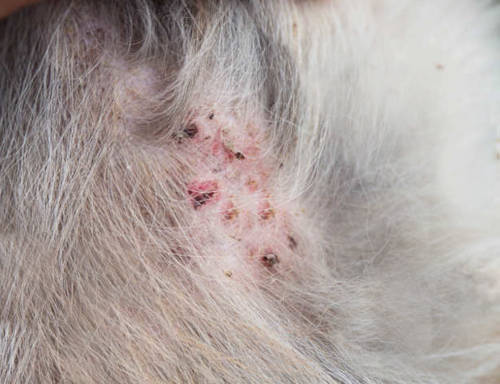
The term folliculitis involves two parts- “follicle” and “-itis”, indicating inflammation/ infection involving the hair follicle. It occurs when bacteria, yeast, or mites enter the hair follicles and cause inflammation.
3. Impetigo
Often affecting puppies, impetigo in dogs is an unsightly and uncomfortable skin condition which can cause red bumps, sores, and scabs on the face, belly and lower jaw.
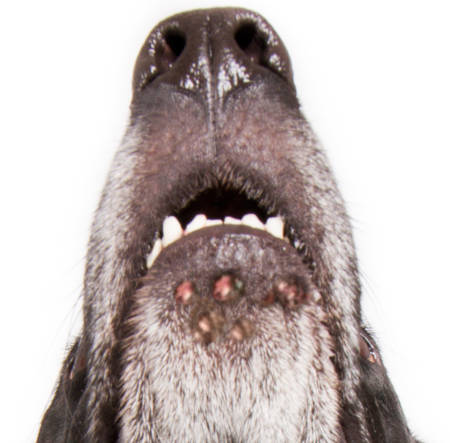
Impetigo can be spread to other animals through direct contact or contaminated objects, and while it doesn’t typically cause serious health problems, a trip to the vet is necessary for diagnosis and treatment.
Impetigo is a bacterial skin infection that starts on more superficial skin layers (instead of deep in the hair follicle or pore like the two conditions above).
Treatment usually involves oral antibiotics as well as topical creams or ointments to keep lesions clean and help them heal properly. It is important for owners to practice good hygiene for both their pet and themselves to reduce the risk of further spreading this infection.
Acne, Folliculitis, and Impetigo may all look similar, with common signs including inflammation of the skin, red raised areas that may be painful or itchy, or pustules. These sometimes appear suddenly, or can develop slowly, but will last for days or even weeks if left untreated. To diagnose the condition, a skin scraping or biopsy may be required.
4. Allergic reactions
Some dogs can develop bumps on their chin due to an allergic reaction to a food, medication, or environmental allergen. If the bumps are local to the chin only, and don’t spread or get worse, it’s possible the reaction is minor. However, if the bumps are on the chin and there are swellings in other areas, it may be hives which can indicate a more severe allergic reaction that needs immediate care by a veterinarian.
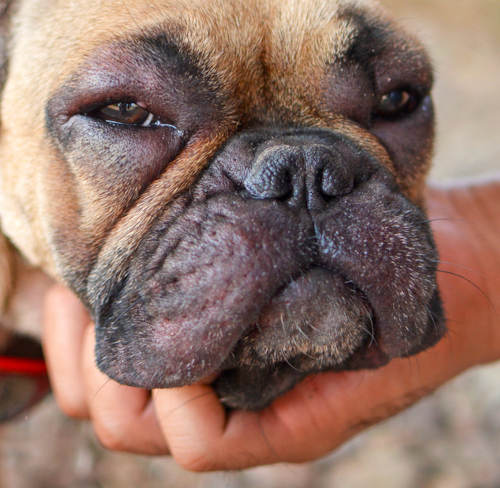
The most common signs of allergies affecting the face and chin include itching and scratching, redness and inflammation, swelling, hives, sneezing, runny or itchy eyes, and possibly discharge from the eyes or nose. Learn more about skin issues due to allergies.
5. Other causes
If your dog’s chin bump or lump doesn’t look like any of the conditions mentioned above, read our page showing pictures of 12 common lumps and bumps in dogs. Growths such as skin tags or warts can also appear on a dog’s chin (as shown on the image below).
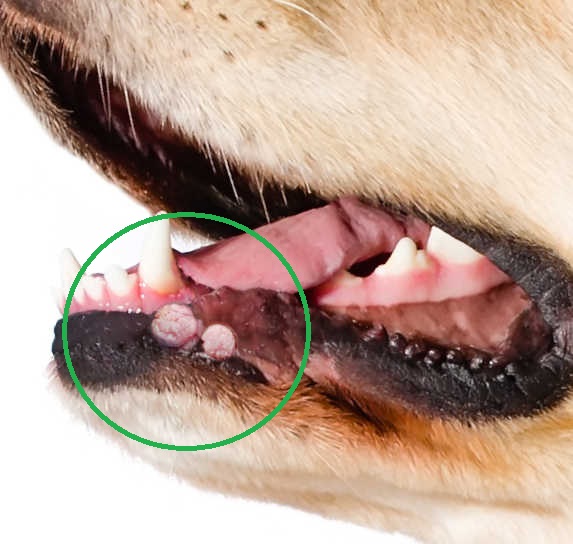
To diagnose the condition, a skin scraping or biopsy may be required.
The most important step in getting your dog’s skin condition diagnosed is a visit with their veterinarian. There are a few important things that will happen during this visit:
1) Recent history – you’ll want to share any important details, like when you first noticed the problem, whether it ever got better or worse, and anything else important
2) Physical exam – the doctor will want to look at your whole dog, not just their chin, but of course the chin will be an important part of the exam. The doctor will look closely at the way the bumps look, how severe they are, and look for any sign of infection.
3) Tests – depending on the history and physical exam, the doctor may want to run some tests. For instance, they may use a swab to take a sample from the skin. This may allow them to see if there are bacterial or fungal organisms present.
4) Skin biopsy – for more severe cases, especially those that are resistant to treatment, the doctor may require a skin biopsy. Dogs often need to be sedated or anaesthetized for this, but it’s a minor procedure that involves taking a sample of skin from the affected area and sending it to a specialist to look for abnormalities. Learn more.
Should I see my vet or can I wait-and-see?
For the most part, bumps on your dog’s chin are not an emergency – If the bumps look like acne, you may be able to observe for a day or two, then call your veterinarian for advice or to make an appointment if the signs don’t resolve.
In the meantime you can start with home treatments like:
- cleaning the area with gentle soap (see next section “best products to help”) or
- changing out plastic food dishes for stainless steel (as plastic dishes can harbor bacteria and cause irritation).
When to see your vet:
1. If your dog is having an allergic reaction, so it doesn’t progress into a more severe allergic reaction.
If you suspect the bumps on your dog’s chin to be from an allergic reaction, it’s best to contact your dog’s veterinarian as soon as possible as some allergic reactions can get worse over time and become severe.
2. If the issue persists for more than a few days, or gets worse.
3. If your dog is obviously uncomfortable, or showing other signs of illness.
For example, if your dog is scratching at or rubbing their chin, or reacting painfully to handling, or bleeding – you should seek treatment through your veterinarian within a couple of days so your dog can be comfortable and pain-free again. If your dog is comfortable and the issue just started, it may be ok to wait to see if it resolves on its own, but it shouldn’t be any longer than 4-7 days.
Best products to help
There are a couple of products you can try at home to see if they help resolve the bumps on your dog’s chin:
1. Cleansing Wipes
These soothing and cleaning wipes can be used daily to help wipe away any dirt that may have accumulated around your dog’s chin, as well as removing any dead skin cells or excess oil.
- Non Stinging Cleaning Wipes with Topical Solution for the Topical Management of Skin and Coat.
2. Benzoyl Peroxide
Benzoyl Peroxide can be used to effectively treat acne and folliculitis. Lather onto the affected area with water and leave in contact for 5-10 minutes before rinsing off with clean water. Repeat 2-3 times per week.
- Relief of Scaling and Itching from Dermatitis, Skin Infections, and Follicular Plugging to Stop Scratching and Pain.
Veterinarian treatments
Veterinarians typically recommend one of three treatment options for bumps on a dog’s chin: antibiotics, antifungals, or surgery. Antibiotics are usually prescribed to treat bacterial infections such as folliculitis and impetigo. If a fungal infection is suspected, then an antifungal medication may be prescribed. Surgery is an option if the bumps are tumors, in which case they will likely be removed via a minor surgical procedure.
In addition to medications, your veterinarian may also recommend additional treatments such as topical creams or ointments to help keep the lesions clean and reduce itching or inflammation. It is important to follow all instructions from your veterinarian carefully, as improper treatment can result in the condition worsening or spreading.
In some cases, lifestyle changes may be recommended to help prevent recurrences. This may include changing your dog’s diet, avoiding plastic bowls, and regularly brushing your pet’s fur. Regular grooming also helps reduce the chances of a bacterial infection by removing any dirt or debris that may contain harmful bacteria.
Frequently Asked Questions
Would a vet be able to help over a video call?
It may be possible for a veterinarian to diagnose your dog’s chin bumps over a video call, but it would depend on the severity and nature of the bumps.
During a video call, the veterinarian will be able to see the appearance of the bumps, their size, and ask you about any other symptoms your dog is experiencing. They may ask you to provide close-up video of the affected area to help with their assessment.
How can I prevent bumps from getting worse or coming back?
- Keep your dog’s chin clean and dry
- Avoid plastic bowls which can harbor bacteria and cause irritation
- Use a feeding mat to keep feeding areas tidy
- Consult with your veterinarian for persistent or recurring issues
Are these bumps painful?
Bumps on a dog’s chin can be painful depending on the underlying cause. This is especially likely if there is an infection present, or inflammation that’s been ongoing for a while. In some cases, dogs may try to scratch or lick the area around the bumps, which can further irritate the skin and cause discomfort.
If your dog seems to be in pain or discomfort when you touch the bumps, it is important to take them to a veterinarian as soon as possible for an examination and diagnosis. Painful bumps should be treated quickly to prevent any further issues from arising.
Are the bumps contagious?
While bacterial or fungal skin infections can be contagious, practicing good hygiene can prevent the spread between pets and other pets, or their humans. If your dog has chin bumps, you can gently clean the area, but also be sure to wash any communal food or water dishes, dog beds, and wash your own hands.
Is it safe to pop the pustules on my dog’s chin?
No, it is not safe to pop the bumps on your dog’s chin yourself. Popping or squeezing the bumps can be painful for your dog and can lead to further irritation, infection, or scarring. It can also cause the infection to spread to other areas of your dog’s skin.
How long will it take my dog’s chin bumps to heal without treatment?
It is difficult to say as it depends on the cause and severity of the bumps. Without treatment, some conditions may worsen or spread, so it is important to visit a veterinarian for diagnosis and treatment. The vet will be able to provide you with an estimate of how long it could take the bumps to heal once they have prescribed a course of treatment.
How long will it take my dog’s chin pumps to heal with treatment?
Mild cases of acne or folliculitis may start to show improvement within a few days of treatment and may take up to two weeks to fully heal. More severe cases of infection or abscesses may require several weeks of treatment, including antibiotics and/or surgical drainage, and may take several weeks to fully heal.
It’s important to follow your veterinarian’s instructions for treatment, including any medications or topical treatments, as well as any recommended changes to your dog’s diet or hygiene routine.
Disclaimer: This website's content is not a substitute for veterinary care. Always consult with your veterinarian for healthcare decisions. Read More.




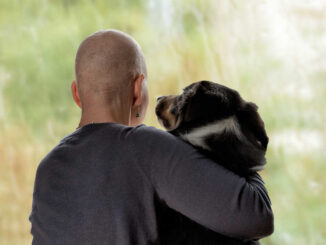
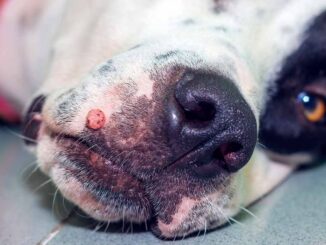
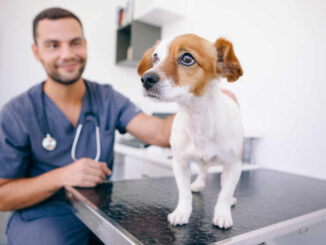
Be the first to comment